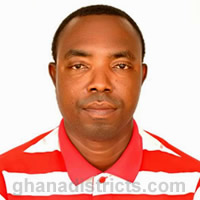About 96% of the population has access to a traditional medical centre within 0 – 5 kilometers. Due to the affordability of these services it is patronized by the majority of the people.Only 44.0% of the population is within 0 – 5kms of a clinic. In the regional context, it ranks third to NJM (50.4%) and Akuapim North (49.5%). However the fact that 56% of the population have to travel over 5kms and more to reach the nearest clinic indicates the danger the critically sick, women in labour and the seriously wounded are exposed to. Again the bad conditions of the roads in the rural areas come into play.
The health delivery system in the district is classified as modern (western) and traditional (herbal and spiritual). The former is operated by the Ghana Health Service and private providers. There is a Municipal Health Administration (MHA) with its implementing bodies, the Municipal Health management Team (MHMT) and the Management of the Suhum Government Hospital (SGH).
Population
The municipality is divided into six with different population sizes and composition in terms of percentage of children and women in the productive age.
Health Facilities
There has been an improvement in the number and quality of facilities since 2005.
Hospital
The municipality has two hospitals – the Suhum Government Hospital and the privately owned Freda Memorial Clinic – all at Suhum. There has been an increase in the number of level B facilities from 2 to 7 with the upgrading of 7 health post into RCHs, More level C facilities – CHPs centers-have been opened at Aponapono, Kukua, Koransang, Apau Wawase, Supresu, Duodukrom, Otoase, Akote, Obretema, Beposo and Sra.
The facilities at Apau Wawase, Dome and Supresu are housed in the ultra modern Epicenters constructed by The Hunger Project (THP). The resident nurses are housed properly in terms of number of rooms and household facilities. Patients to the clinic and other users of the facility have accesses to a KVIP. More people now have geographical access to primary health care than in 2005. The only very deprived areas are the Kwaboanta Electoral Area and Dedewa and Obuoho with their bad roads to Akorabo and Anum Apapam.
Service Available at the Health Facilities
The service available depends on the level of the facility.
Municipal Level
Suhum Government Hospital is the first referred point in the municipality, it provides gynecological and obstetric care, surgical services, eye care, mental care and general out-patient and in patient care. Other services provided are X-ray, laboratory, ultra - sound and child care.
Sub Level (RCHs) and CHP Centers
The facilities serve as the first point of contact for community members. The services they provide are treatment of minor ailment ante and post natal care, supervised delivery, immunization, health education, growth monitoring and supervision of community level health services.
Reproductive and Child Health care
The objective of the MHA was to promote and maintain the health of mothers and children and infant mortality.
• Ante and Post Natal Care
There was rise in ante natal care comparing 2009 to the previous with the exception of the year 2008. The numbers of ante natal registration stood at 6613 up from 4359 at the end of 2005. However, post natal attendance went down from 7314 in 2005 and 4355 at the end of 2009.
• Supervised Deliveries
Supervised deliveries continued to increase from 2006 to 2009. The annual increases were 8.1% (2007), 11.3% (2008) and 16.17% (2009). They represented 34.1%, 33.6% and 44.5% of A. N. C registrants. For figures were not impressive gains the free care for pregnant women.
• Still Births
The figures were not encouraging over the period with the number rising from 29 in 2006 to 36 in 2009.
• Maternal Deaths
Maternal Deaths rose from 2 in 2008 to 3 in 2009. The main causes of death were IPPH, ICVA, IUD with Peritonitis Septicemia.
• Child Health Care
Much was achieved during the period to ensure the survival of children from about 13% in 2006 to 2.9 in 2009.
• Child Nutrition
Over the period 2006 – 2009 there was a reduction in the percentage of malnourished children.
• Micro – Nutrition Deficiency Control Programme
DHMT carried out routine and mass supplementation of nutrients for under-5 children as well as post – partum mothers. The coverage for the programmes was as follows at the end of 2009.
Routine Supply: 34.5%
Mass supply: 66.8%
Post Partum: %
• Expanded Programme of Immunization
The performance on child immunization improved significantly over the period.
The coverages achieved in 2009 were as follows: BCG: 110.0%, Penta: 89.1%, OPV 3: 105.6%, Measles: 91.2%, Yellow Fever and TT2 (WIFA):101.1%. The overall drop-out rate was 15.6%.
• IMCH (Polio NIDs)
The coverage level in respect of polio immunization for the period 2007 – 2009 was always above the targets. However, three of the sub-districts had coverage below 90% and in one case below 80%.
The only recorded persistent increases in coverage over the three year period was Coaltar, incidentally the farthest from Suhum where personnel and vaccines are sent to the other parts of the district. Akorabo is very close to Suhum experienced a decline in coverage from 137.1% in 2006 to 120% in 2008 and 119.5% in 2009. Nevertheless the Akorabo recorded the highest coverage for the three years with 125.7% while Anum Apapam had the lowest with 101.9%.
Traditional Medical Care
A very significant part of the population relies on herbal and trado-spiritual health care system. The practitioners treat ailments such as fractured bones, piles, gynecological cases, stomach ulcers, impotence, high blood pressure, diabetes, stroke, epilepsy and psychiatric disorders. The practitioners range from herbalists to spiritualists such as pastors, mallams and traditional priests. There are about 70 registered herbalists and spiritual healing camps in the district.
The Christian Herbal Healing Clinic, Ayisaa
The Clinic is situated at Ayisaa just after Nankese on the way to Koforidua. Herbal mixtures and cream in conjunction with simple physiotherapy treatment are used to treat ailments.
A modern clinic building and ward are being put to replace the wooden structure that serve as the OPD and Consulting room.
Vulnerability and Exclusion
Programme, projects and undertaken and activities undertaken included HIV/AIDS and sexually Transmitted Infections (STIs), child rights and protection. Protection and empowerment of women, community care for the physically and mentally challenged during the Aged
HIV/AIDS
The HIV/AIDs control activities increased during the period 2006-2009.
The 239 persons (113 males and 126 female) went through pre-test counseling and were all tested. Sixty – four (64) of them tested positives.
62.5% the people who tested positive were women even though they formed only 52.7% of the total number.
• Only 1 below 20 years tested positive – 1.6%
• This indicated the existence of a window of hope for the district in the fight against HIV/AIDS
• However, as many as 23 0f the 64 (36) were woman in the reproductive age 15 – 39, even though women were over – represented by only 5 (2.1%) of the 239 person tested.
Prevention of Mother to Child Transmission (PMTCT)
There was an increase in PMTCT activities over the period. As at the end of 2009 there were ……. ANC Facilities Results of Tests carried on pregnant women from 2007 to 2009 were as follows.
ANC Tests (2008-2009)
The percentage of all ANC Registrants testing positive were as follows; 0.7%, 0.7% and 0.8% respectively
Percentage of ANC Registrants who did not go for test was as respectively, 21.0%, 7.8%, and 15.4%.
Percentages of counseled pregnant women who tested positive were respectively 0.8%, 0.8%, and 1.0%
Trend for HIV/AIDS 2005 – 2009
There trend in cases over the 2005 – 2009 period was ups and downs in the number of cases. However, the percentage of ANC Registrants tested went up from 0.8% in 2007 to 1.0% in 2009.
Other Activities
Throughout the information education and communication (IEC) campaign formed the mainsting of concerted effect of Response Initiative and development partners to halt the further transmission of the hidden epidemic in the district.
• Training of VCT Counselors
• Training of community – based pear educators/counselors
• VCT at the community level in all sub – district
• HIV/AIDS awareness and prevention durbar and campaigns
• Screening of donated blood
• Creation of one association of PLWHAS
• Support for PLWHAS and those affected by HIV/AIDS
National Mutual Health Insurance Scheme
The National Mutual health insurance scheme started as the Mutual Health Insurance Scheme in 2005. As at the end of that year it had a registered membership of 12,514 representing 7.0% of the projected population of 178543. The breakdown into the different categories of membership was as follows: informal – 2543 (20.3%), SSNIT – 1678 (13.4%), SSNIT Pensioners – 79 (0.63%), Under 18 (6371), 70years and above 12,514 (10.9) and Indigents 464 (3.7%).
The number of registered membership for the Suhum Sub – District is 15.4% more than the population. This may be explained by the following factors;
The only public and only private hospitals in the Municipality are located in Suhum Town
The Suhum bi-weekly market is the busiest and the people from the surrounding communities and the other sub-district take the opportunity to attend the hospital consequently some of these people prefer to register at Suhum.
People from the neighboring communities in the East Akim Municipality – Apedwa, Akokoose, Asafo, etc find it easier accessing the service of the SGH and Freda Memorial Hospital than the Kibi Government Hospital and therefore preferred to register with the SMA Mutual Health Insurance Scheme. Equally the percentage of the populations of three sub-districts – Anum Apapam, Coaltar, and Akorabo – registered with the SMAMIS are very low because parts of the population depend on facilities in the West Akim and New Juaben Municipalities.
Paid–Up Membership
In spite of the high figure of the population registered with the scheme as at the end of 2009 paid – up members were only 36,529 representing only 19.3% of the population and 26.4% of the membership.
Category of Membership
The categorization of membership according to percentage shares of the scheme membership and districts population is as follows;
Members of NHIS in SMA (2009)
Category % Share of Membership % Population
Informal contributors 26.4 19.3
SSNIT contributors 10.4 7.62
SSNIT Pensioners 2.3 1.66
Under 18 44.1 32.19
70 and above Years 8.3 6.08
Pregnant Women 3.7 2.68
Indigent 4.8 3.48
Total 100.00 73.00
Source: Mutual Health Insurance Scheme, Annual Report 2009
The percentage of the vulnerable in the membership of the scheme Under 18’s, the Aged, and Indigent is a high as 57.8% and if pregnant women are added it jumps to as much as 61.5% A look at the situation gives two pictures; On the one hand it means more than 3 out of every 5 scheme members are not able to pay their premium on their own. On the other hand, the high proportion of under 18’s indicating a bright future for the scheme in respect of membership. However, the high percentage of the aged (i.e. 70years and above) which is 8.3% must be a matter of concern for according to the PHC 200 the 70years and above age group constitute about 4% of the population With life expectancy rising the percentage of the Aged will go up and endanger the financial viability of the scheme.
Community Care Programmes
Community care programmes covers people with disabilities (PWDs), child right and protection and juvenile justice administration.
People with Disabilities (PWDs)
Community base rehabilitation aims at strengthening the relationships and promoting interaction between individuals and disability. Their families and the society in which they live, CBR calls for all services at other levels that are available to support community effort. People may be disabled by physical, intellectually, sensory medical or mental illness.
However, inadequate data on the nature of disability in the nation and district and adequate commitment have hampered budgetary provision for the management of the problem.
Date Created : 11/27/2017 3:46:05 AM






 facebook
facebook twitter
twitter Youtube
Youtube TOLL FREE 0800 430 430
TOLL FREE 0800 430 430 +233 593 831 280
+233 593 831 280 GPS: GE-231-4383
GPS: GE-231-4383 info@ghanadistricts.com
info@ghanadistricts.com Box GP1044, Accra, Ghana
Box GP1044, Accra, Ghana